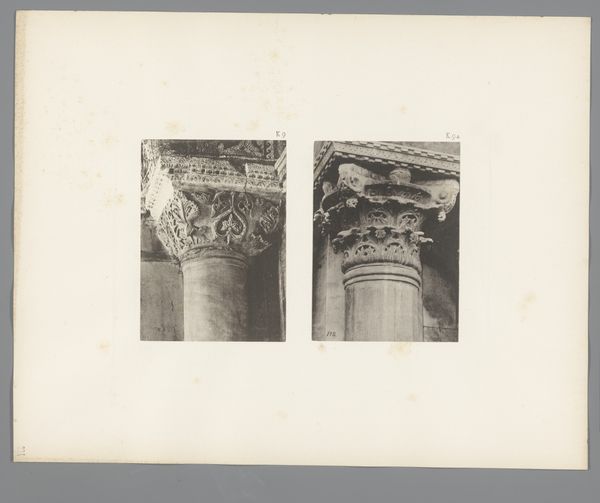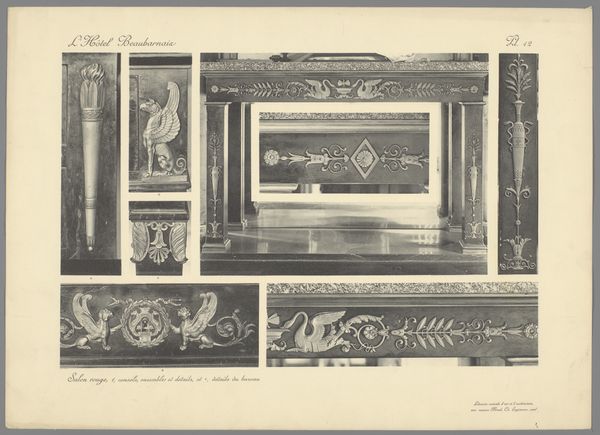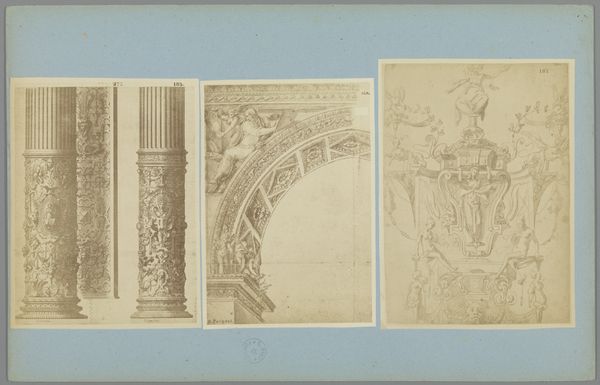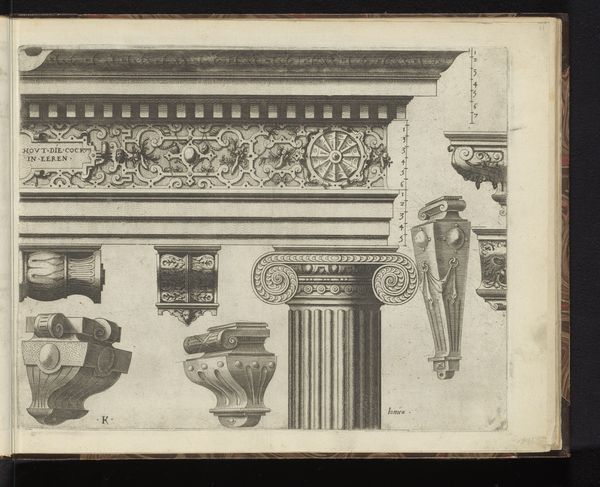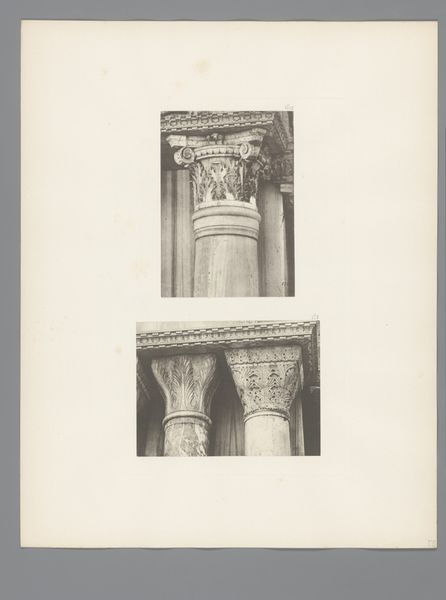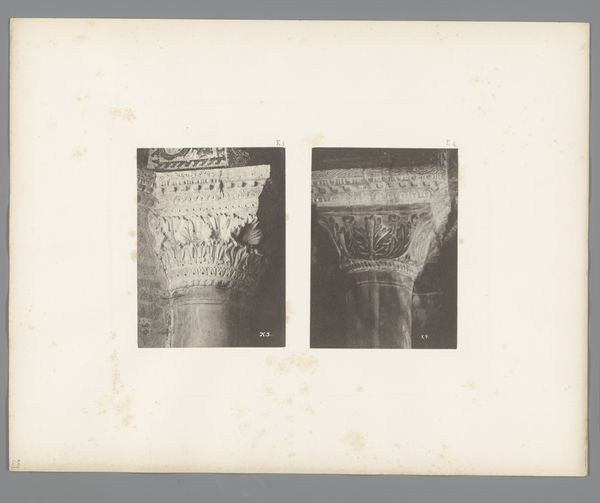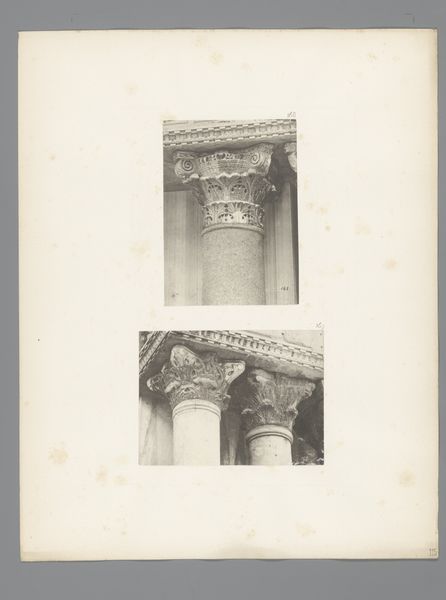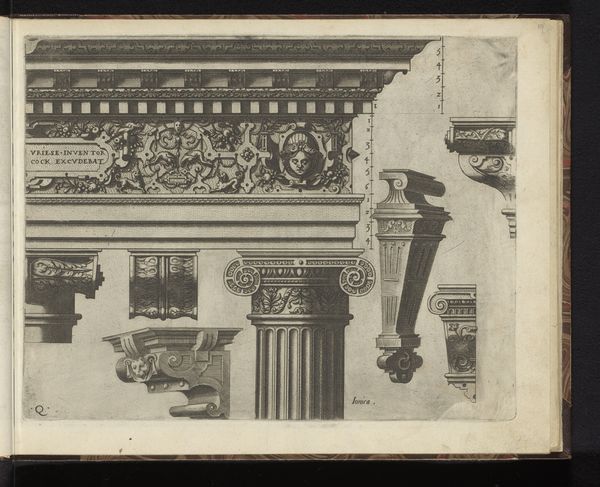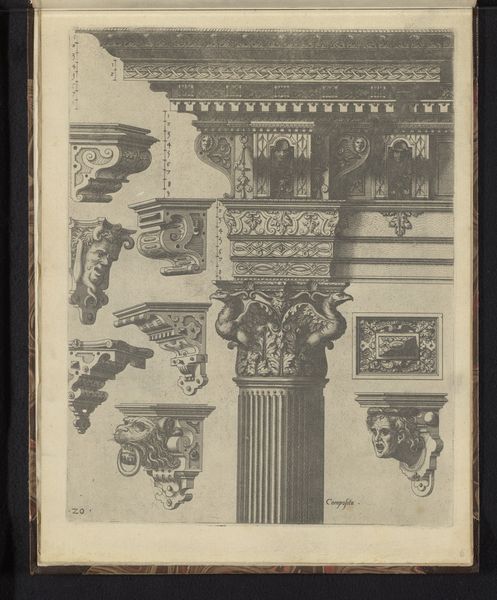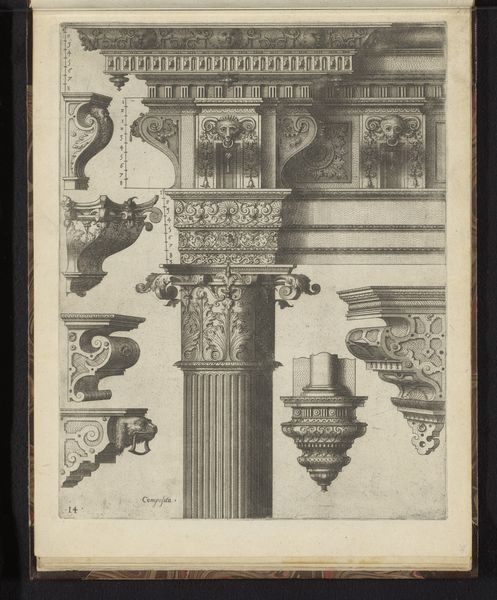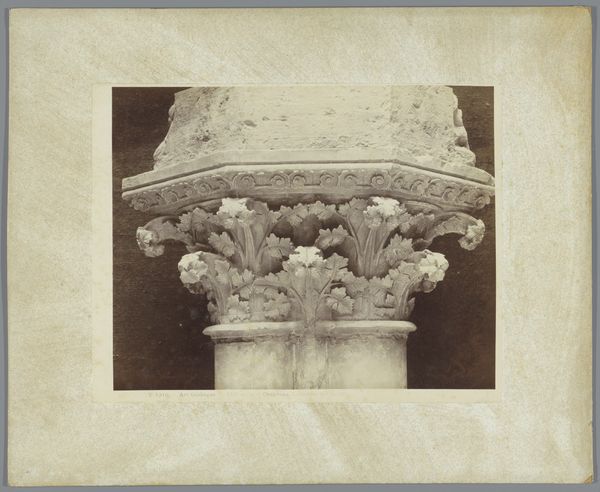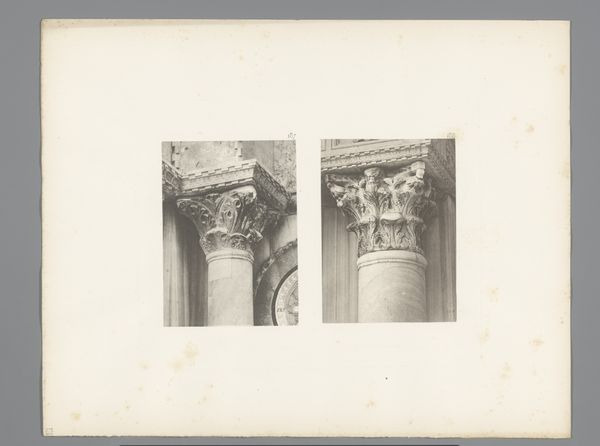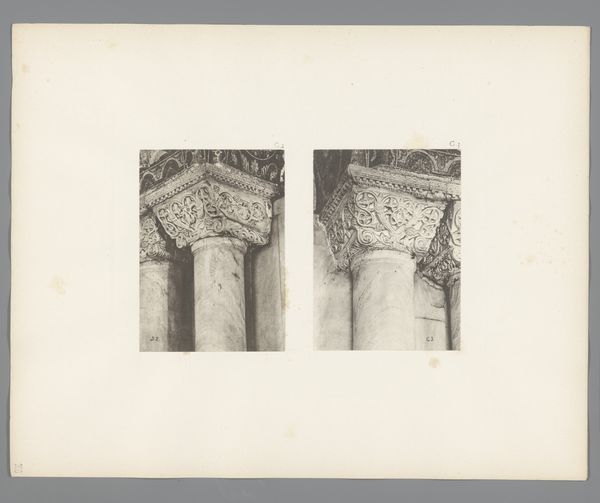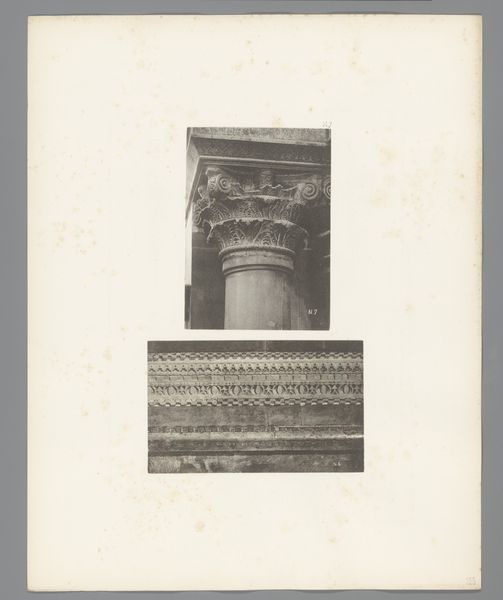
Negen pleistermodellen van bouwfragmenten door Claude Leprêtre, mogelijk verwerkt in het Musée du Louvre 1858
0:00
0:00
collage, print, etching, bronze, photography, sculpture, marble, architecture
#
collage
# print
#
etching
#
bronze
#
photography
#
geometric
#
sculpture
#
academic-art
#
marble
#
architecture
#
realism
Dimensions: height 313 mm, width 387 mm
Copyright: Rijks Museum: Open Domain
Editor: This is "Negen pleistermodellen van bouwfragmenten door Claude Leprêtre, mogelijk verwerkt in het Musée du Louvre" from 1858, by Edouard Baldus. It seems to be a photographic collage, with various images of architectural plaster casts. The details are beautiful but, as a collage, the overall impression is a bit clinical, like a catalogue. What can you tell me about this piece? Curator: This work is interesting because it collapses the boundaries between documentation and artistic practice. Baldus, through photography and collage, is not just recording architectural details. He’s participating in their production. Think about the labor involved in creating these plaster models – the sculptors, mold-makers, the transport of materials – and then Baldus adds another layer through his photographic process. Editor: So you are saying the *making* of these building fragments, not only their representation, is a focus? Curator: Precisely! The plaster itself, its materiality, is crucial. Plaster is cheap and easily worked, making it a vital medium for architectural planning. But the final construction used more durable, luxurious materials like marble and bronze, according to the tags. What does that imply, thinking about class and access? Editor: That plaster was a means to an end, a stepping stone. A tool in the construction of high art for the wealthy elite. But I never considered photography as another layer of that constructive "labor." Curator: Yes. And by presenting these models in a collage format, Baldus draws attention to the *process* of selection, arrangement, and ultimately, the construction of architectural meaning itself. It also begs questions about photography’s role in perpetuating ideals around academic art, doesn’t it? Editor: It does. I’m definitely looking at this as more than just a record now; Baldus captured and transformed a complex artistic labor.
Comments
No comments
Be the first to comment and join the conversation on the ultimate creative platform.
